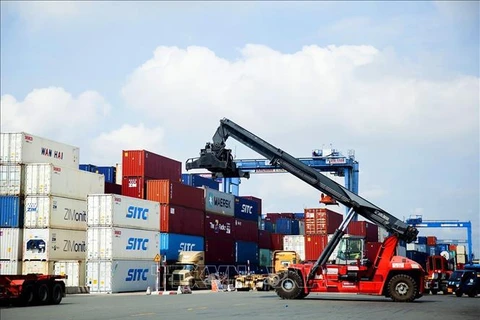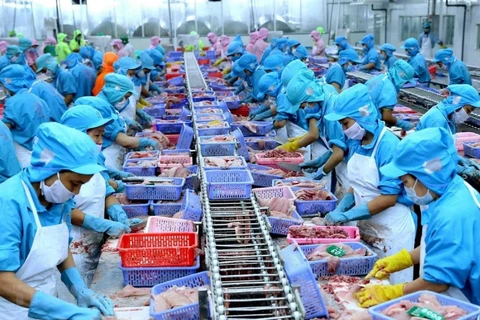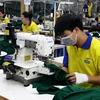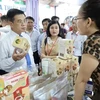Hanoi (VNA) – Vietnam's exports of agro-forestry-aquatic products are forecast to rebound in the second quarter as import market economies have shown signals of recovery, insiders have said.
Falling exports of agro-forestry-aquatic products
In the last quarter, the export turnover of agro-forestry-aquatic products hit 11.19 billion USD, down 14.4% year-on-year. The sharp decline in many key export was attributed to the decreased export value of the agricultural sector.
The shrimp and tra fish exports in the review period dropped by nearly 40% and 33.1% to 578 million USD and 422 million USD, respectively.
Along with aquatic products, wood and wooden products also experienced a significant decline of 28.3% in export value compared to the same period last year, reaching only 2.88 billion USD.
Other products such as bamboo, rattan, and sedge products totaled sales of 172 million USD, down 34.9% year-on-year.
To Thi Tuong Lan, Deputy General Secretary of the Vietnam Association of Seafood Exporters and Producers (VASEP), said inflation and the banking crisis in the US have greatly impacted on the number of orders of businesses, as the country is the largest importer of Vietnamese aquatic products.
Consumption has not met expectations due to the impact of inflation, resulting in high inventory levels, she noted.
As a result, importers are restructuring their inventories, reducing prices to clear out the stock. This has led to a decrease in both prices and demand for aquatic products in many import markets.
The wood industry has also faced challenges due to large high inventory levels and a sharp drop in global purchasing power.
According to the Vietnam Timber and Forest Product Association (VIFOREST), the number of businesses tendering orders remains limited.
Positive signals in Q2
In contrast to the decline in the fishery and wood industries, the export of rice, vegetables and fruits experienced stable growth in the quarter.
In the first quarter, the export of rice enjoyed the strongest growth. The country exported 1.7 million tonnes of rice worth 952 million USD, representing increases of 19% in volume and 30% in value compared to the same period last year. This was also the high record in the past 12 years.
Meanwhile, the export turnover of fruits and vegetables expanded by 11% thanks to China's opening of its door, and the official export of high-value fruits such as durian and dragon fruit to the populous market.
The vegetables and fruits, and rice sectors are forecasted to grow in the second quarter, driven by the increasing demand from key markets such as Indonesia, the Philippines, and China.
Secretary General of the Vietnam Fruit & Vegetables Association Dang Phuc Nguyen is still optimistic about the export of fruits and vegetables in 2023, including the prominence of durian.
If the export value of durian reaches 1 billion USD, it will contribute to lifting the total export value of fruits and vegetables to around 4 billion, representing a year-on-year rise of 20%, Nguyen said.
Le Ba Anh, Deputy Director of the Department of Quality, Processing and Market Development under the Ministry of Agriculture and Rural Development (MARD), predicted that the export of aquatic products may recover at the end of the second quarter or early the third quarter when China increases its imports and consumption, and the Russia-Ukraine conflict becomes calmer.
He recommended seafood exporters topay attention to markets with strong potential and close proximity, such as China and Japan, during this period./.



























